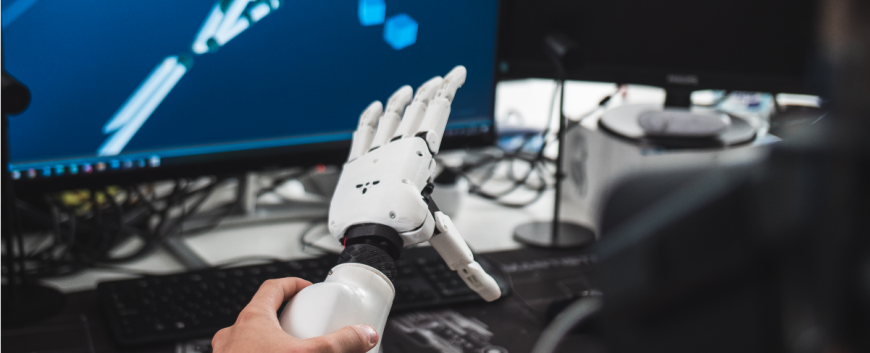"Ember Arm" - an innovative upper limb prosthesis

The product called “Ember Arm” -developed by an interdisciplinary research team- is a costeffective and innovative upper limb prosthesis, mostly made with 3D printing technology, which with the support of its functions, countless daily routines and activities can be performed in the case of acquired or congenital limb deficiency.
The great advantage of the myoelectrical controllable device is that it not the patient must accommodate to the prothesis’ master muscle functions according to the permanent settings, also prosthesis gestures can be taught.
With the help of the software that uses Artificial Intelligence (AI) for the classification can be run on an external computer, and the classification parameters can be recalculated and downloaded to the arm’s microcontroller simply, which performs the decision task with new parameters for each gesture.
The prosthesis uses a lot of functions for ordinary daily tasks (e.g., transport, catch, adaptive adjustment of the maximum gripping force in different environments, ... etc.), these are adjusted simply via a mobile application.
Innovative technical solutions also include vibration-based haptic feedback touching an object, and secure grip on amorphous objects, as well as easy repairability.
Because several parts of the prosthesis palm are made with 3D printing technology, it is possible to make personalized manufacturing, which gives uniqueness also in material, colour, size or anthropomorphic appearance.
The main parts of the development are the following:
Signal Processing
The prosthetic arm is myoelectric controlled. Surface Electromyography signals are recorded from the user. An onboard amplification and filtering unit is used to extract which muscles contribute to the movement components and the amplitude of each movement. Haptic feedback provides to the user by detecting contact with an object by the fingertips.
Machine Learning
The prosthetic arm has an onboard Single Board Computer (SBC). The SBC acts as the brain of the arm. The primary task of the SBC is to analyze the data sent from the signal processing unit. Determining which muscle groups contribute to the EMG pattern helps determine the grip. The amplitude of the signal assists in building a proportional control for speed and force.
Training
The learning process of the prosthetic arm is done through in-app mini-games. The user completes tasks in the game by controlling the prosthetic arm.
Mobile Application
The user has the ability to control the prosthetic arm parameters such as speed, gestures, force control through a mobile app. The app lets the user control the grip modes. It also gives the user status updates about the arm.
Hand Mechanics
The various parts for the prosthetic arm are 3D printed. The prosthetic arm has the ability to grip amorphous objects. The fingers are designed to move together as well as independent. This gives the user the ability to create custom grips according to their preference. It has opposable thumbs to help handle tool better. It has options to freeze the current grip or release and reset the arm in case of emergency. The prosthetic arm cover can be made to look artistic or lifelike. The arm is designed to feel ultra-comfortable.

